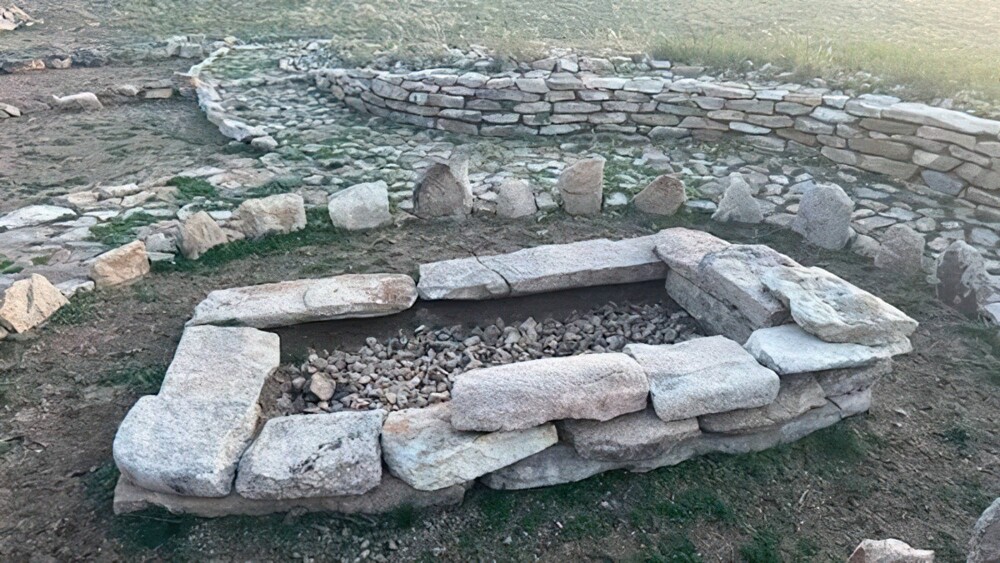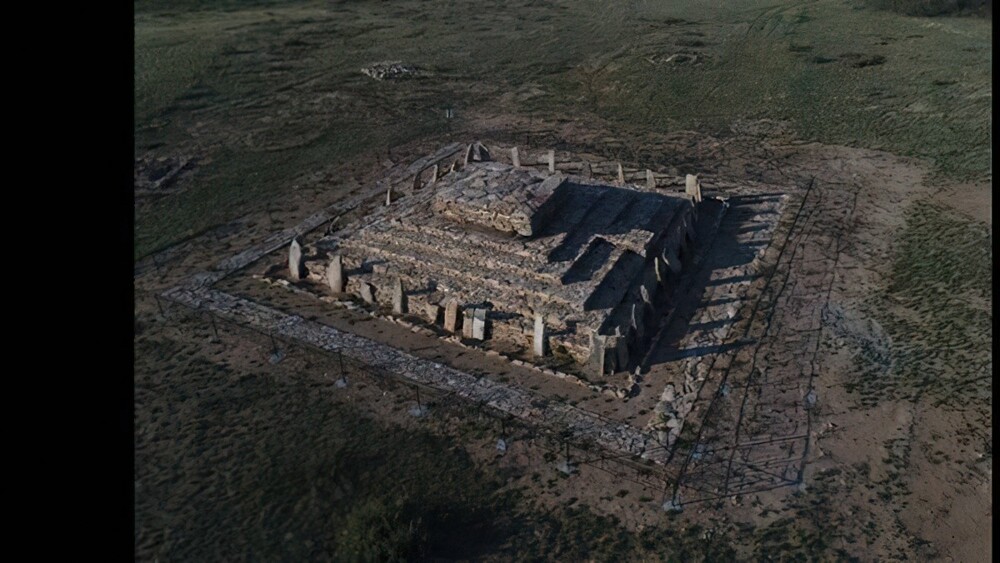The Begazin pyramid in Kazakhstan may be of great importance for the history of the Turks (3 photos)
In 2016, in the Shetsky district of the Karaganda region, as a result of lengthy excavations, a unique pyramidal-step burial ground was cleared. Experts believe that it is related to the Scytho-Saka culture, and this could be an important discovery for Turkic history. 
This structure is called the Begazin or Saryarka pyramid, and officially belongs to the Begazy-Dandybaev culture, the Late Bronze Age and the period of the Late Andronovo culture. The Andronovo culture is characterized by an agricultural and pastoral nature of the economy, and the Begazy-Dandybaevskaya culture that replaced it is characterized by a nomadic one.
The pyramid was erected to bury the leader of a powerful local tribe. Using radiocarbon analysis, the dating was established: XII-XIV centuries. BC.
The place where the pyramid is located is called the Karazhartas burial ground. It is on a hill on the left bank of the Taldy-Nura River, about 90 km from Karaganda along the Almaty highway. Several similar pyramids were found in the valley of the Talda River.
“The presence in the region of several pyramidal stepped mausoleums indicates that the valley of the Talda River, located within the Sary-Arka steppes, was used in the Bronze Age by representatives of the Andronovo culture in the same way as the Valley of the Kings in Egypt - for the burial of their great leaders,” - says archaeologist Aybar Kassenali.
Artistic works of the Begazy-Dandybaev period were found in the pyramids, which, according to scientists, reveal historical continuity with the art of medieval Turkic tribes and carry common features of steppe culture and traces of traditional Turkic religious beliefs.
One of the main types of economic activity of the Begazy-Dandybaev period was the export of metal. The rulers who built the pyramid at Karazhartas exported the metal to a large area stretching from Namazga-depe of Turkmenistan in the south to Tagisken in Kharezm in the west and to the Altai Mountains in the east. Around the same time, a social elite began to emerge in the steppe communities of Kazakhstan and the first statehood began to form.
Historian and archaeologist from Ankara University Serhan Chinar claims that in historical sources of the ancient era there is information about pyramidal burial grounds belonging to the Scythian-Saka and Begazy-Dandybaev communities 
Emphasizing that the pyramidal-step mausoleums discovered in Karazhartas may be early versions of the burial structures of the Scythian era mentioned in historical sources, he said the following:
“The Saks were led by Queen Zarina, who, as a result of campaigns with neighboring peoples, civilized her country and founded several cities. It is also reported that after her death, her people built a triangular tomb, the largest in their lands.”
The Begazy-Dandybaev communities also include the large proto-urban settlement of Kent, discovered during excavations. Near it, special sacrificial altars were found where rituals were performed. Inside the complex structures, reminiscent of the pyramid-shaped mausoleums of Karazhartas, were ritual sculptures carved from small stones in the shape of the human body. Such finds resembled images of gods who were worshiped during annual festivals, similar to those of the ancient inhabitants of Mesopotamia.
Judging by the drawings on the stones, the pyramid-mausoleum of Karazhartas was not only a burial place, but also served as a sacred place for religious ceremonies of the Andronovo communities.
According to Serhan Chinar, the Begazy-Dandybaev communities also have a close connection with the Karasuk culture of Southern Siberia, which is an integral part of the proto-Turkic culture. 
“In the mausoleums of the Begazy-Dandybay period, the corridors leading to the burial chamber always open towards the sunrise, which is a manifestation of traditional Turkic religious beliefs,” says Chinar.
“Round-shaped ceramic vessels found in graves from this period represent a symbol of the cultural continuity of the steppe peoples. They resemble ritual vessels of the Scytho-Saka period, and in a later period they represent archaic variants of traditional cast cauldrons common among Turkic tribes since the period of the Asian Huns,” he adds.
Another aspect that the scientist pays attention to: geometric patterns and tamga-like symbols found in burials are also characteristic of the art of medieval Turkic tribes. This is evidence of ethnographic and historical continuity.






























